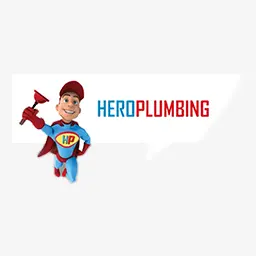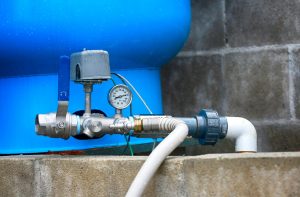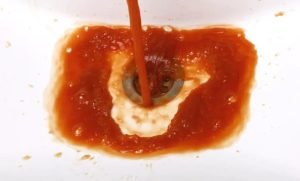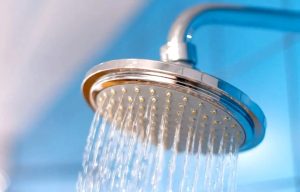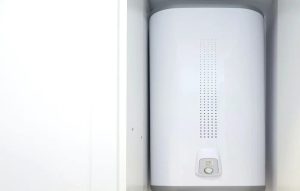Table Of Contents
Hot Water System Heating Guidance
Turning on the hot water system is one of the more critical tasks to do when you first move into a home. In this post, we’ll walk you through turning on a hot water system in Australia and show you how to avoid common mistakes.
Turning on a hot water system is quite similar for most homes across Australia. Remember that many homes have different setups, and following your hot water system manual instructions is essential.
Hot Water System Components
If you’re new to hot water systems, you’ll want to brush up on your knowledge before getting started. Below we’ll explain each of the critical components that typically make up a hot water system:
Hot water storage system
The storage cylinder is where the hot water sits and stays warm. The storage cylinder holds hot water and is heated using a gas burner. It is typically also used to heat hot water for other appliances in your home.
This will be located outdoors and installed just below ground level. The cylinder might be mounted on a wall or buried neck down in the ground. Make sure to follow any specific setup instructions included in your manual.
Hot water distribution system
This connects the storage cylinder directly to the domestic hot water system piping network (typically copper or plastic pipes). In most cases, this will be an underground network of pipes connecting the heating area with all the taps throughout your house.
Temperature and pressure relief valve
This safety valve protects your hot water system from overpressure. If your water pressure matches or exceeds its maximum pressure, it allows hot water to vent out of the home instead of causing any damage. This valve will be buried just below ground level. It will often be located right next to the storage cylinder.
Expansion vessel
This is a non-pressurised vessel that prevents the system from overheating and bursting. When the water inside the cylinder reaches a specific temperature and pressure, it will push it into this expansion vessel, where it will cool down. It is typically located outdoors, usually just below ground level. It looks like a large metal pipe with an orifice, allowing hot water to pass through.
Switches and valves
These allow you to control your hot water heater. The tank switch turns on/off the gas connected to your storage cylinder, a cold-water valve controls whether or not cold water reaches the storage cylinder, and any individual taps have their own on/off switch.
Most of these valves are under the sink, but you can find some inside your house. You’ll have to follow your hot water system manual to see where each is located in your specific setup.
Storage pipe piles
These plastic piles connect the storage cylinder directly with the domestic hot water system piping network. The piping network follows underground paths from your home to the front yard. Ensure you don’t touch any piping or electrical components when turning on your hot water system. Doing so can severely hurt or kill you.
A Guide For Turning On A Hot Water System

The process of turning on a hot water system is quite simple and only requires a few steps. Below, we’ve broken down the main instructions for turning on a hot water heater and provided additional information for each step:
Remove the panel or front cover
Make sure to turn off your home’s gas supply first! Check if the power is turned off at the mains and all electrical components are switched off – gas hot water systems often overheat when left switched on for extended periods.
Remove the pipe caps or plugs
Check for damage to the piping by removing any debris that may be stuck inside. Not touching any pipes when turning on your hot water system is important.
Turn on gas
In most gas hot water systems, you’ll turn the gas valve (typically located outside the storage cylinder) to a ‘fully open position,’ allowing gas to heat up and ignite.
Turn on the cold water supply
Most domestic hot water systems come with a cold water tap that allows cold water to be fed into the storage cylinder (usually an underground pipe). You must turn the cold water on before the hot to avoid overheating.
Check if hot water is available
This is simply a matter of turning on a tap and seeing if it produces hot water. If your hot water system is installed correctly, you should have access to hot water in under three minutes.
Turn off the gas supply
When all your taps are turned on, it’s time to turn off the gas supply to your storage cylinder. You can turn this off using a lever or fully closing the valve. If there isn’t enough pressure, check that all connections are properly secured and check whether any components are leaking.
Turn off the water supply
Once all the taps are turned on, you need cold water. Turn off your water mains and open the cold water tap to allow it to drain. You can switch on an outside tap to turn on an outdoor hose, enabling the system to drain.
Turn on the water supply
Once the hot water system has drained, you should turn on your hot water supply. You can do this by turning a tap or fully opening the cold-water valve.
Mistakes To Avoid When Turning On Hot Water Systems

Turning on cold water before hot
This will cause significant issues with your hot water system as the pressure will be too high and damage the system. If you need to tap into cold water while the hot is still flowing, turn off the gas valve first.
Running multiple taps at once
You should never run more than two taps at once on a hot water system as this will apply too much strain on your system and eventually damage it. Ensure you don’t have any leaks or damaged components when turning on your hot water system.
Undercharging your storage cylinder/storage tank
Most modern systems have an automatic charging device that ensures that your storage cylinder/tank is fully charged before turning on any taps. Ensure the storage cylinder is filled and check if the temperature is above 60 degrees.
Placing a hot water cylinder on an incline
Hot water cylinders should always be placed on a level surface, not an incline. This will prevent freezing and allow for even heating.
Using a tap that is not for hot water
This is a huge mistake as this will cause severe damage to your piping/electricity. The water temperature will be way too high and cause severe issues with your electric hot water system. If you need to use another tap, turn off that tap first.
Leaving the heater switched on indefinitely
Your hot water system’s lifespan depends on how often you use it. The more often you use your water heating system, the faster it will lose pressure and heat. If you don’t plan to use the hot water system very often, then consider disconnecting the gas supply so that you don’t waste money and damage your system.
Unless you avoid such mistakes, you may face problems such as blocked drains and damaged valves.
Brands Of Hot Water Systems In Australia
Regardless of whether you choose a gas, electric, or solar hot water system, you should always go for the best brands. Below are some popular hot water system brands in Australia.
Dux hot water
The Dux brand is one of Australia’s most popular hot water systems, especially among property investors. They’re made from high-grade stainless steel that doesn’t corrode and are often used commercially. The Dux 10L hot water system provides 2.4kW of power and has a storage cylinder capacity of 10L.
Rheem hot water systems
Rheem is a prevalent brand for hot water systems in Australia (especially in commercial buildings). They’ve been manufacturing hot water systems for over 100 years, making them the longest-running manufacturer of hot water systems.
Their Rheem 15L hot water tank is made from premium materials that don’t rust and can withstand significant pressure. This cylinder tank is ideal for larger homes and will provide up to 15 litres per minute.
Rinnai hot water systems
Rinnai is one of the leading hot water system manufacturers in the world. Their 5KW hot water systems come with a storage tank capacity of 10L and provide up to 2.6kW power – this is suitable for most applications.
Sunny hot water systems
Sunny is yet another popular brand in Australia that makes hot water tanks, but it may be surprising to learn that they don’t make storage cylinders. This brand provides a hot water system that works with your existing storage cylinder/tank. This means you don’t have to spend money installing a new cylinder but still enjoy the benefits of a modern hot water system.
Warmflow hot water systems
Warmflow is another popular brand, focusing on quality and high performance. They offer up to 4kW of power and can be used for commercial and domestic use (they also produce their own range of storage tanks).
Save Bills With Hot Water Systems
Hot water systems are a great way to save on your electricity bills. By taking advantage of advanced technology, you can optimise your energy use and improve the efficiency of your system. You can reduce your energy costs by 25-50% using electric hot water systems. So, get a professional plumber to help with the installation, service, or repair of your hot water system.




